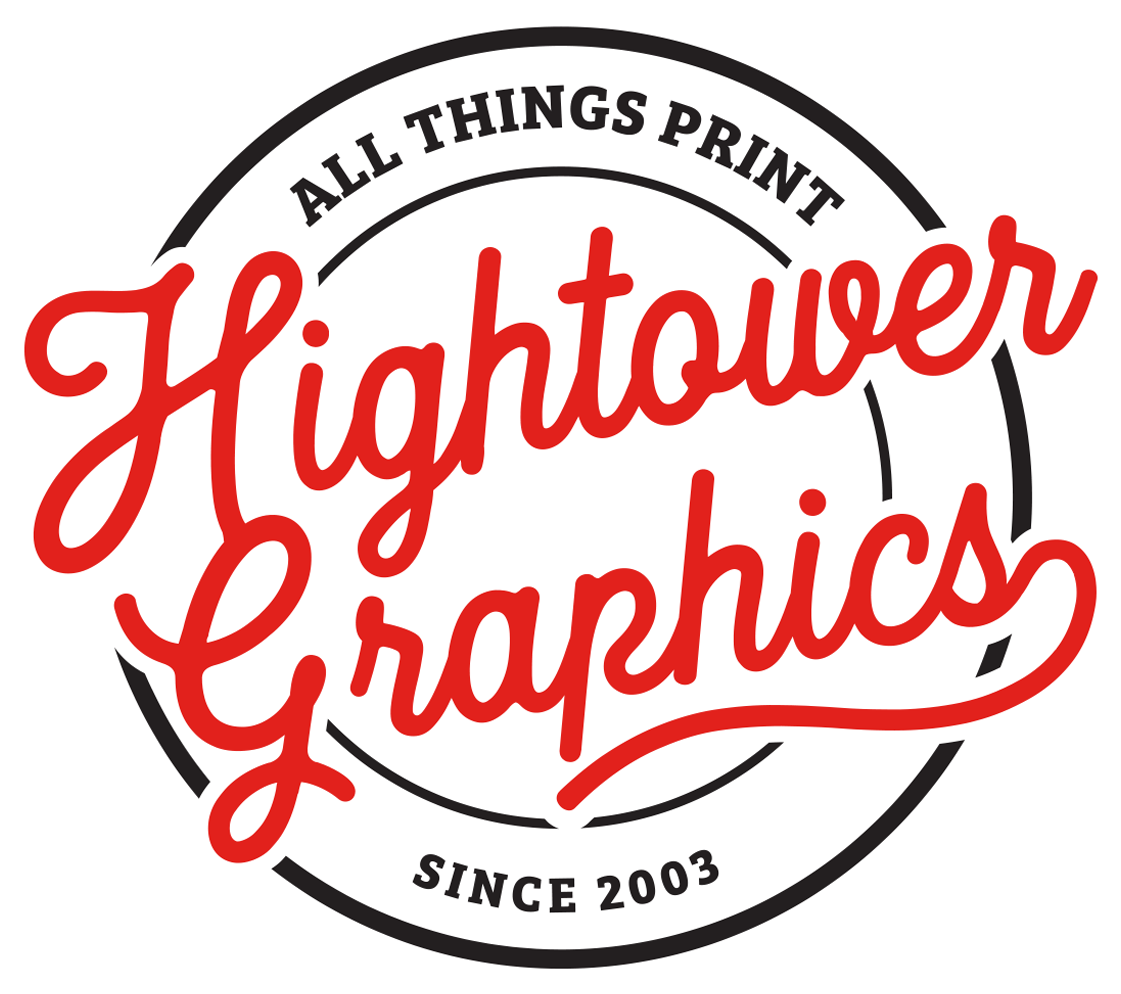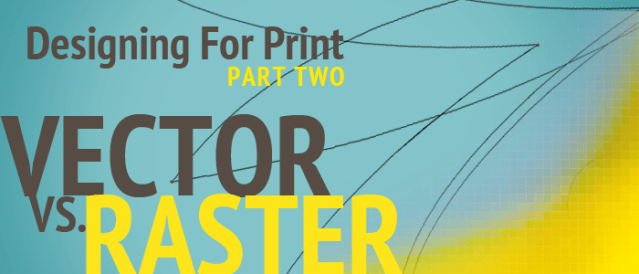This is part two of our Designing For Print series. In our first installment we discussed Bleeds. This month we will discuss the difference between Vector and Raster graphics and when to use them both.
Raster Graphics
A raster graphic is an image file that is made up of thousands (or millions) tiny squares of color information called pixels or dots. These pixels collectively make up the image. Each individual pixel stores it’s own data, so the more pixels the bigger the file size. Big, complex images result in very large file sizes.
The size of an image is usually referred to by it’s resolution. Resolution refers to the amount of detail in an image. The more pixels, the higher the resolution. Resolution is often described by the number of pixels (or dots) per inch. In commercial printing, for example, the resolution of an image needs to be 300dpi which means the image needs to have 300 dots (pixels) per inch.
One of the main drawbacks of raster graphics is that they are resolution dependent. Which means you can’t create more pixels than there already are. Confused? Don’t be, it’s simpler than it sounds. This basically means that if you enlarge an image you are actually increasing the physical size of the square pixels. If you increase the file too much then you start to see the pixels with your naked eye. This is what is happening when you hear that an image is pixellated. Your images will start to look blurry and jagged.
See the image below for an example of what the image would look like enlarged. Notice the squares (pixels)?

Raster images are generally used for photographs and web images among other things. Adobe PhotoShop is the most common software for manipulation of raster graphics. Typical file formats for raster graphics include JPG, GIF, PNG and TIFF.
Vector Graphics
A vector graphic differs from a raster graphic in that it uses math to draw shapes using points, lines and curves as opposed to pixels. For example, a vector graphic of a square is made up of only four points (each corner of the square) and the computer “connects the dots” to form the shape. The file also contains information to fill in the shapes will colors, gradients and strokes.
The points of a vector graphic are stored in the file as x and y coordinates. So as you resize the graphic the x and y coordinates remain the same relative to the overall size of the graphic. Which means you can enlarge a vector graphic as big as you want and you don’t lose any quality.
Take a look at the graphic below and see that the enlarge portion is just as crisp and clean as the smaller version. Pretty great, huh?

Another benefit of vector graphics besides their scalability, is that they generally have much smaller file sizes than raster graphics. The file only has to contain the information for each point and not for each individual pixel.
Vector graphics are generally used for logos and fonts. Adobe Illustrator is the most popular software for creating vector graphics. Typical file formats for vector graphics include EPS and AI.
When To Use Them
We encounter the most issues with vector and raster when it comes to company logos. Logos should almost always be created as vector graphics and most likely your company logo was created that way. But for some reason, about 75% of the time we are supplied with low resolution raster versions of logos. Not only are they not vector, but they are generally small and pixellated which just won’t do for commercial printing.
Many times you are supplied by your company with JPGs and other raster versions of your company logo so you can use it in Word and Excel or your email signature, but they don’t usually distribute the vector version of the logo to every employee. The main reason is because you most likely don’t have software that can open the file anyway.
However, if you are responsible for placing a print order, you should contact your company’s art department or marketing department to see if they can give you the vector file. Otherwise, you probably will be disappointed with the end result of your printing project.
Raster graphics should be used for photographs and images and other graphics that just can’t be created using vector points and lines.
Putting Them Together
While vector graphics are usually created in Adobe Illustrator and raster graphics are created in Adobe Photoshop, if you are designing a brochure or booklet you should actually use a page layout program such as Adobe InDesign. Create all of your graphics up front and insert them into your InDesign document where you need them. Then set all of your text using InDesign’s layout tools.
As always, if you have questions about anything, just give us a call or contact us through the website or Facebook.


